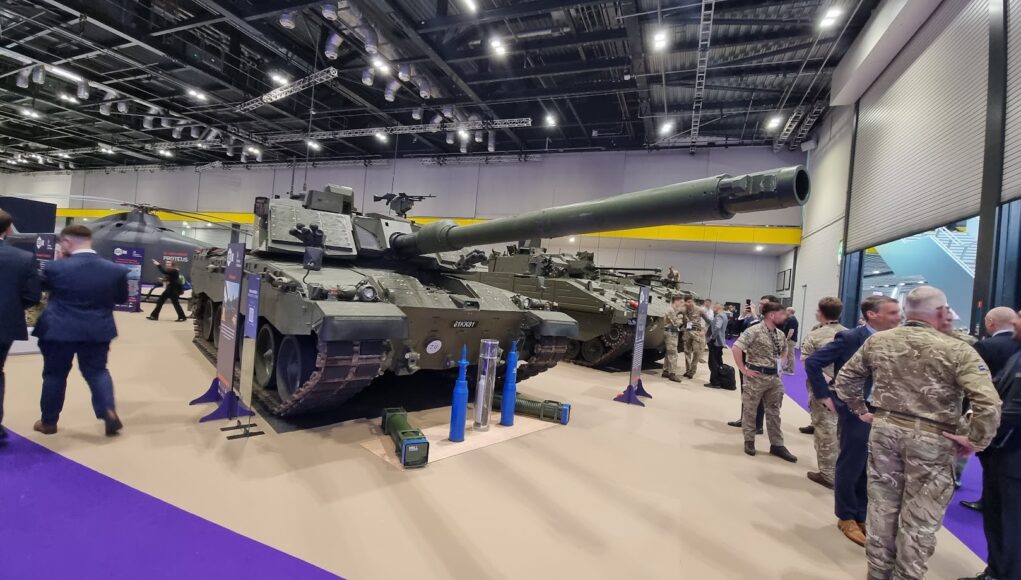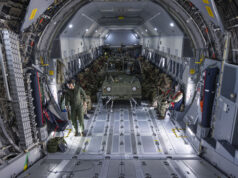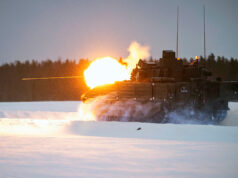When Defence and Security Equipment International (DSEI) opened at London’s ExCeL on 9 September, the first impression was the sheer size of the place.
Organisers declared it the biggest edition yet, and the facts bore that out. More than 60,000 visitors attended over four days. Around 1,700 exhibitors from at least 37 countries took stands, and 42 per cent were new to the show. The footprint sprawled across the Docklands site, filling both the original halls and the newer extensions, with entire zones dedicated to cyber, autonomy and small firms looking to break through.
The scale was felt in the walking. At one point I covered 850 metres from the media centre to a briefing, then back again for another session, and on to a third. I missed part of a presentation simply because of the distances involved. DSEI had grown into something resembling a temporary city, with its own movement patterns, bottlenecks in the aisles and clusters of activity that felt like neighbourhoods. If scale itself was a message, then London sent one loudly that week.
The show took place against the backdrop of several major defence developments. The government’s Strategic Defence Review, published earlier in 2025, set ambitious targets for spending: 2.6 per cent of GDP by 2027, a push to 3 per cent in the following Parliament and 3.5 per cent by the mid-2030s.
Ministers also announced a £773 million package to stimulate growth across the defence economy and committed to increasing direct Ministry of Defence spending with SMEs to £7.5 billion by 2028. Rheinmetall chose the week of the show to highlight its new “Gun Hall” facility in Telford, which is set to produce 155 mm artillery barrels and 120 mm tank guns from 2026 as part of a UK-German partnership.
Defence spending by EU member states was projected to reach €381 billion in 2025, comfortably above the NATO benchmark of 2 per cent of GDP for many. Nordic countries in particular moved with striking speed, with Denmark on track to hit 3 per cent of GDP ahead of even the most optimistic UK projections and Finland’s integrated security model often held up as an example. Germany’s giants dominated entire halls, their stands packed with delegates and journalists.
The themes inside ExCeL reflected the organisers’ slogan, “Preparing the Future Force.” Much of the buzz centred on the Tech Zone, where companies demonstrated artificial intelligence, autonomous systems and cyber-electromagnetic tools. Panels and keynote speeches emphasised the importance of resilient supply chains, NATO cooperation and new industrial partnerships. Yet for all this energy, frustration was also palpable. Many firms, particularly SMEs, spoke openly about long delays in contract pipelines and the Ministry’s slow procurement culture. Services shifted money away from existing programmes to kick-start new projects, a strategy that risked weakening both the old and the new.
While ministers repeated the goal of lifting defence spending to 3 per cent of GDP, industry leaders noted that no detailed road map had been published to show how and when that money would be delivered. Without clarity, firms were reluctant to invest in scaling up. The policy that Britain would only buy what was built in Britain was also questioned. It was meant to support resilience and jobs, yet building new production lines and supply chains typically took five years, while demand for equipment was immediate. For certain high-end capabilities the fallback remained the United States, whose delegations were courted heavily. However much Europe talked about autonomy, American technology remained indispensable.
Politics intruded throughout the week. The government barred Israeli officials from attending in an official capacity, though dozens of Israeli defence companies still exhibited. For some this was a principled stance, for others an awkward half-measure. Protests outside targeted the presence of exporters from particular countries, a reminder that arms fairs no longer existed in isolation from public opinion. Even logistics carried political weight. Rail strikes by the RMT delayed delegations and disrupted schedules, frustrating organisers who saw reliability as part of Britain’s defence brand. Sympathy for the union was in short supply across the halls.
For the organisers, the event was a success. They delivered record numbers and created a forum that felt as much like a diplomatic summit as a trade show. They broadened the stage for SMEs and ensured major announcements were tied to the fair. More importantly, they repositioned DSEI as more than a marketplace for hardware, presenting it as a strategic hub for Western defence preparedness.
Britain still hosted the world’s premier defence exhibition, yet many allies appeared more decisive. Denmark and Finland accelerated their budgets, Germany’s industrial base invested at scale, and Nordic delegations projected assurance. The United Kingdom meanwhile was caught between ambitious rhetoric and financial hesitation.
DSEI 2025 showed impressive organisation and scale, while also reflecting the challenges in Britain’s defence sector. Bringing the world together mattered, yet without procurement reform, firm funding commitments and smoother industrial processes, London risked being seen mainly as a convenor rather than a leader.
The organisers had done their part. The test now lay with government and industry to turn the ambition showcased in Docklands into capabilities that could actually be fielded.














“building new production lines and supply chains typically took five years, while demand for equipment was immediate.”
I disagree with this. The want and need might be immediate, but a demand signal is not a demand. The budgets and the contracts aren’t there to allow for UK expansion. This is largely a MOD planning problem. When there’s a requirement, there’s no budget, when there’s a budget there’s no contract and when there’s a contract there are no people to manage it. Putting all the parts of a project together quickly is very difficult when you have to predetermine most of your budget in an internecine bidding war at the start of every financial year.
SDR took an age to deliver. It was published some months ago. It is shocking that over 14 months into this Government’s term, there is still no road map as to how MoD will get to stated % of GDP targets and what will be bought. Few, if any, major platforms have been ordered in this time, and much kit withdrawn from service or announced as such. Still no sign of a post-SDR Defence Command Paper even.
% of GDP will probably be adjusted/manipulated to suit the current economic performance compared to that when the “increase” was announced.
If you get my drift !
Personally I’d prefer to see material increase figures confirming any financial increase claims.
If you get my drift x2.
It’s not shocking to me, sadly, as I had no real confidence thos Labour government would be any better than the previous one.
Sadly I’ve got to agree with you, this government lacks any form of decisive edge.. talk and talk.
Can anyone get tickets to the DSEI, and if so, how do you go about it?
Ahh, you need to be in certain circles and know the funny handshake.
IIRC nearly every delegate who isn’t a journalist is representing a company or a branch or government, and the ticket prices reflect that it isn’t just a fun day out by being in the 1000s. MPs seem to be able to get in fine, as well.
Not at all. I bought a ticket to I think DSEI 23. It was cheap enough that I DGAF when my unit said that I had to take annual leave if I wanted to go since I wasn’t representing the unit, I didn’t even bother cancelling my ticket. But when you register you have to show a legitimate link to forces or industry, otherwise no ticket.
Did the UK place or announce any orders at DSEI?
Did the UK place or announce any orders at DSEI?